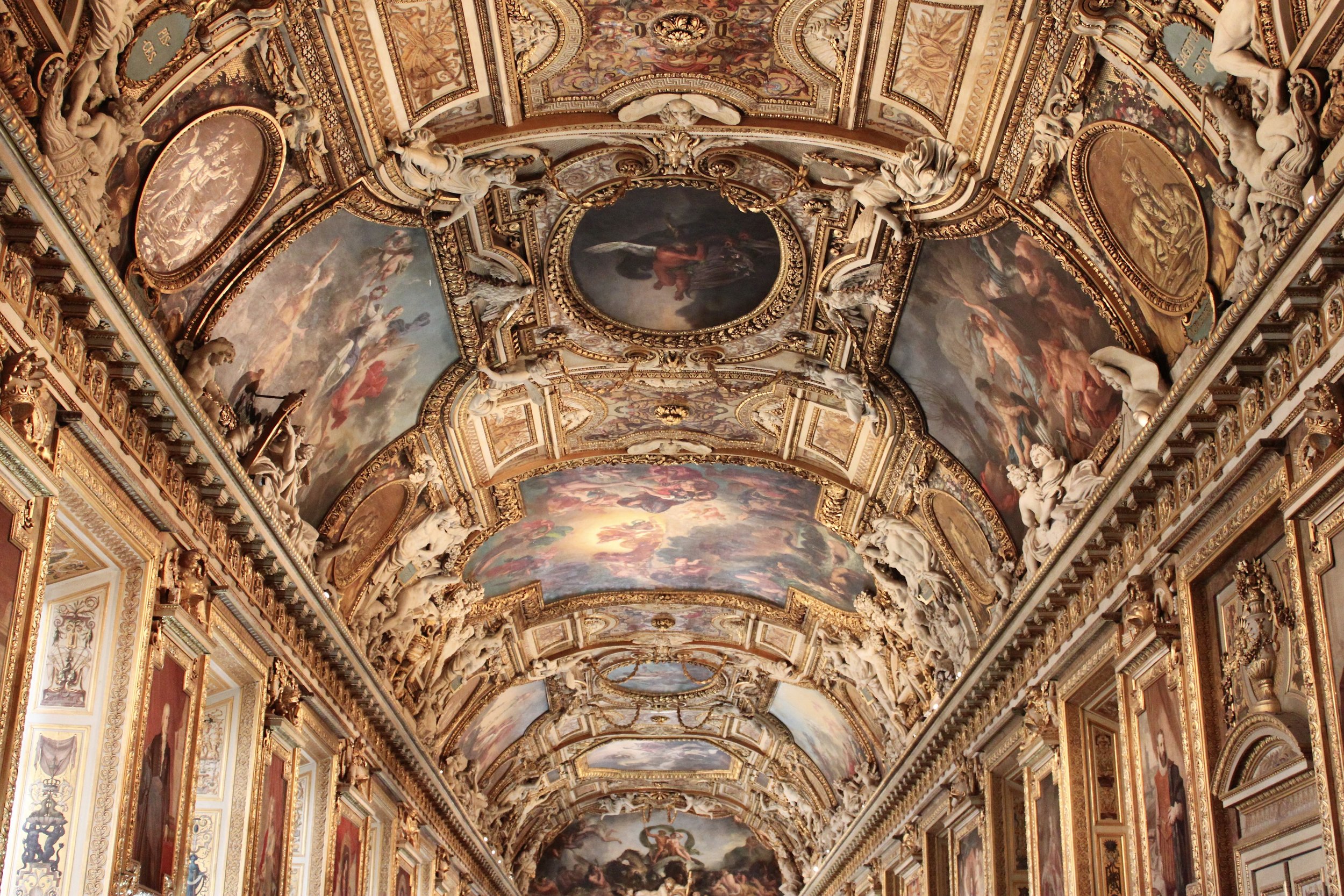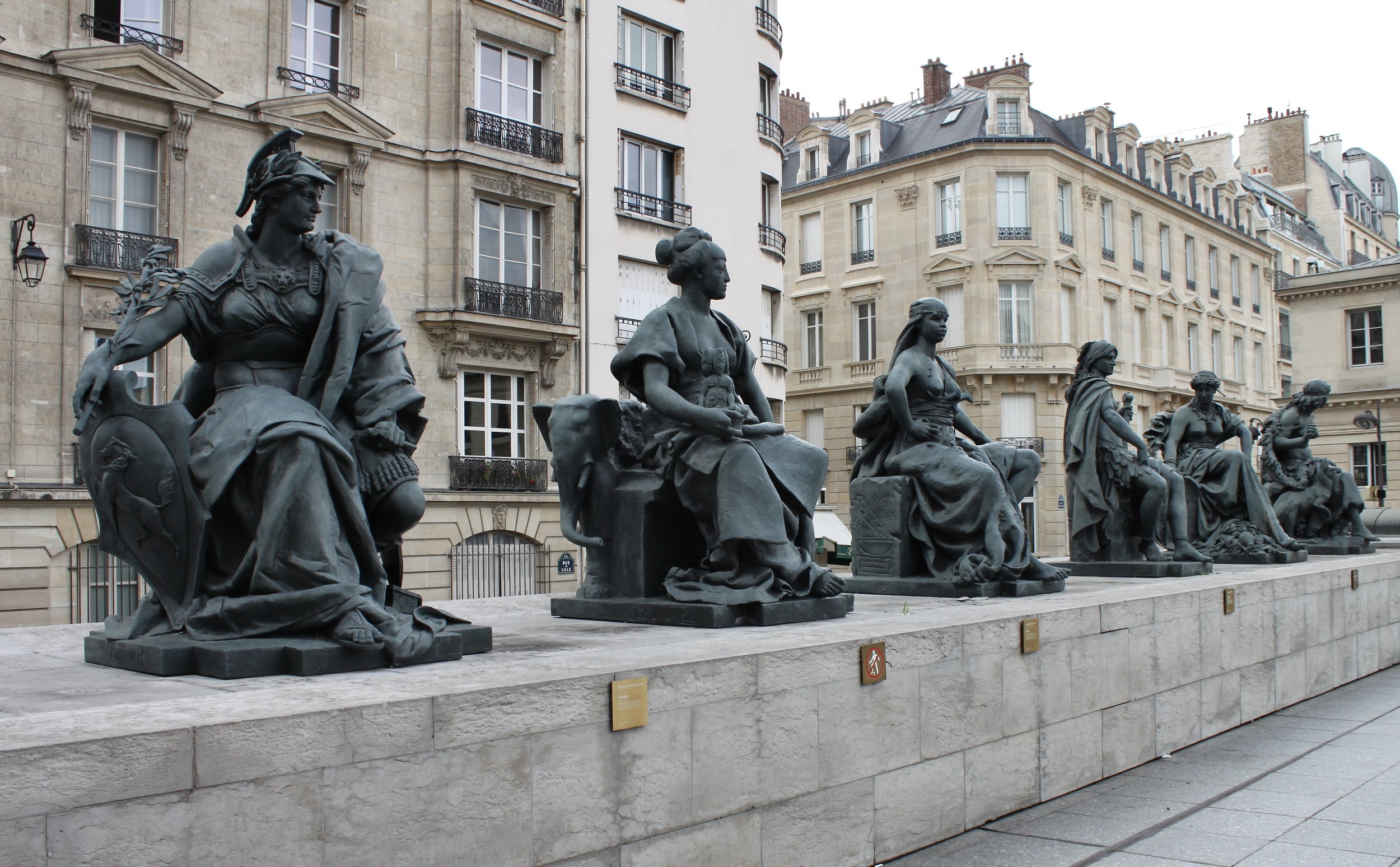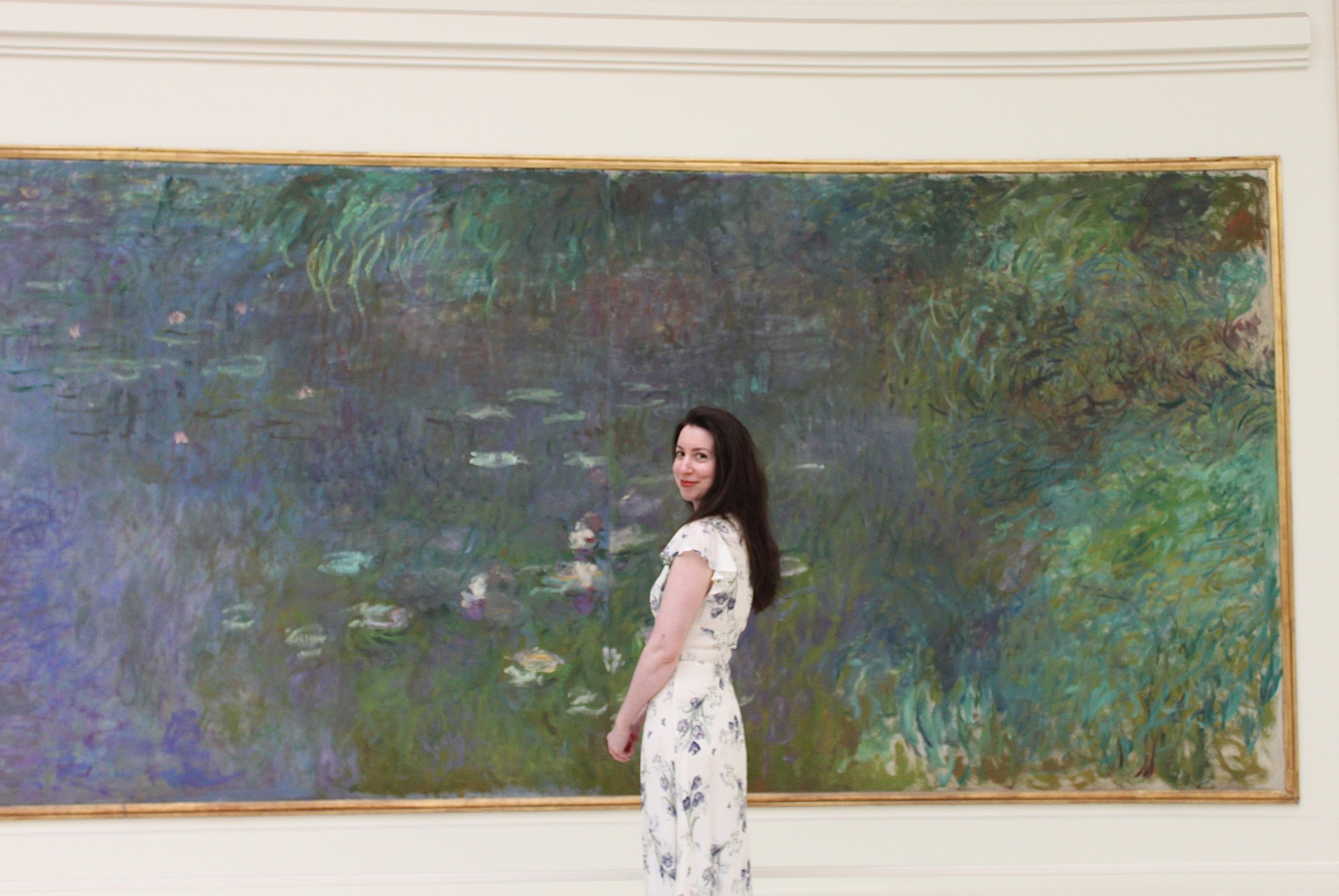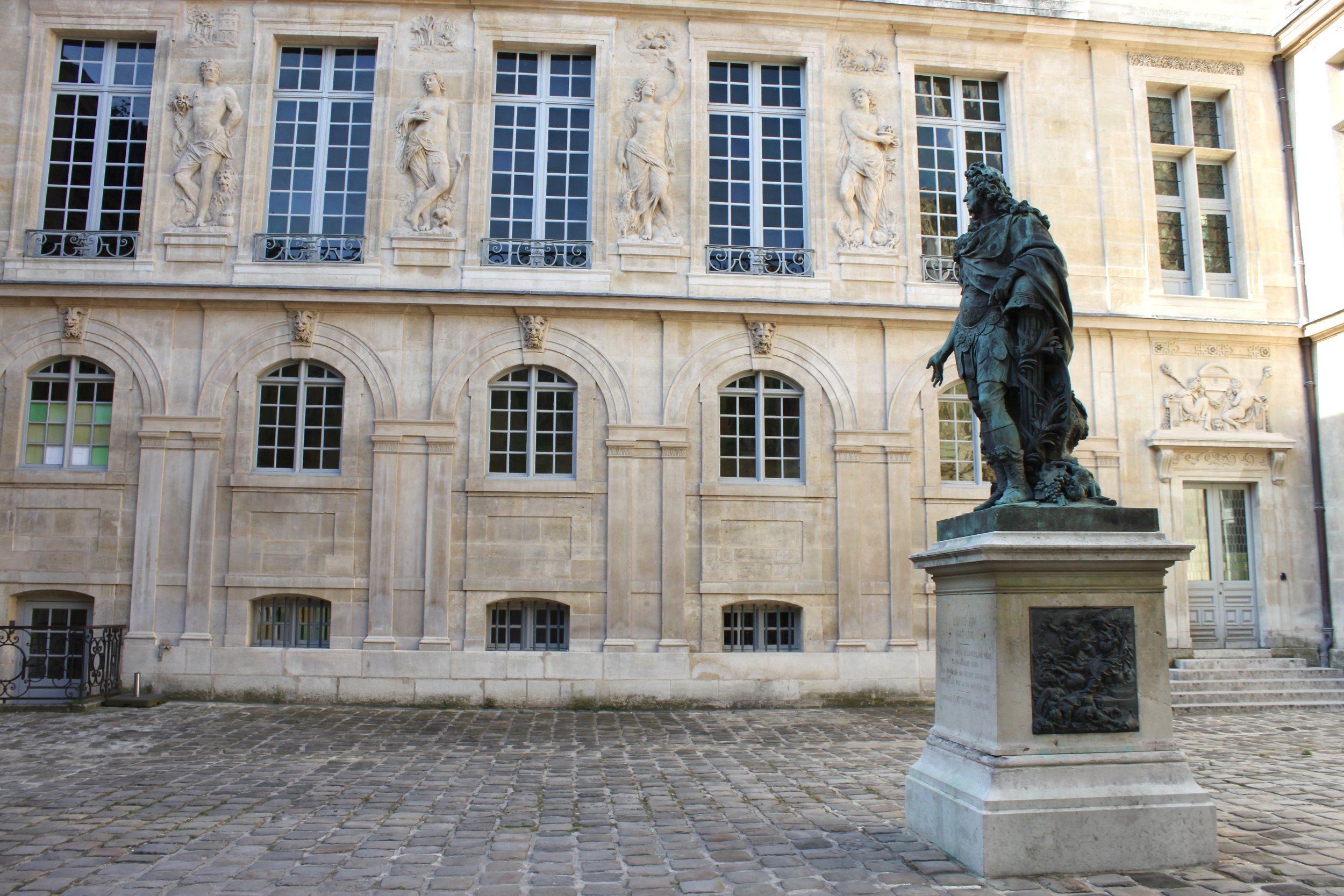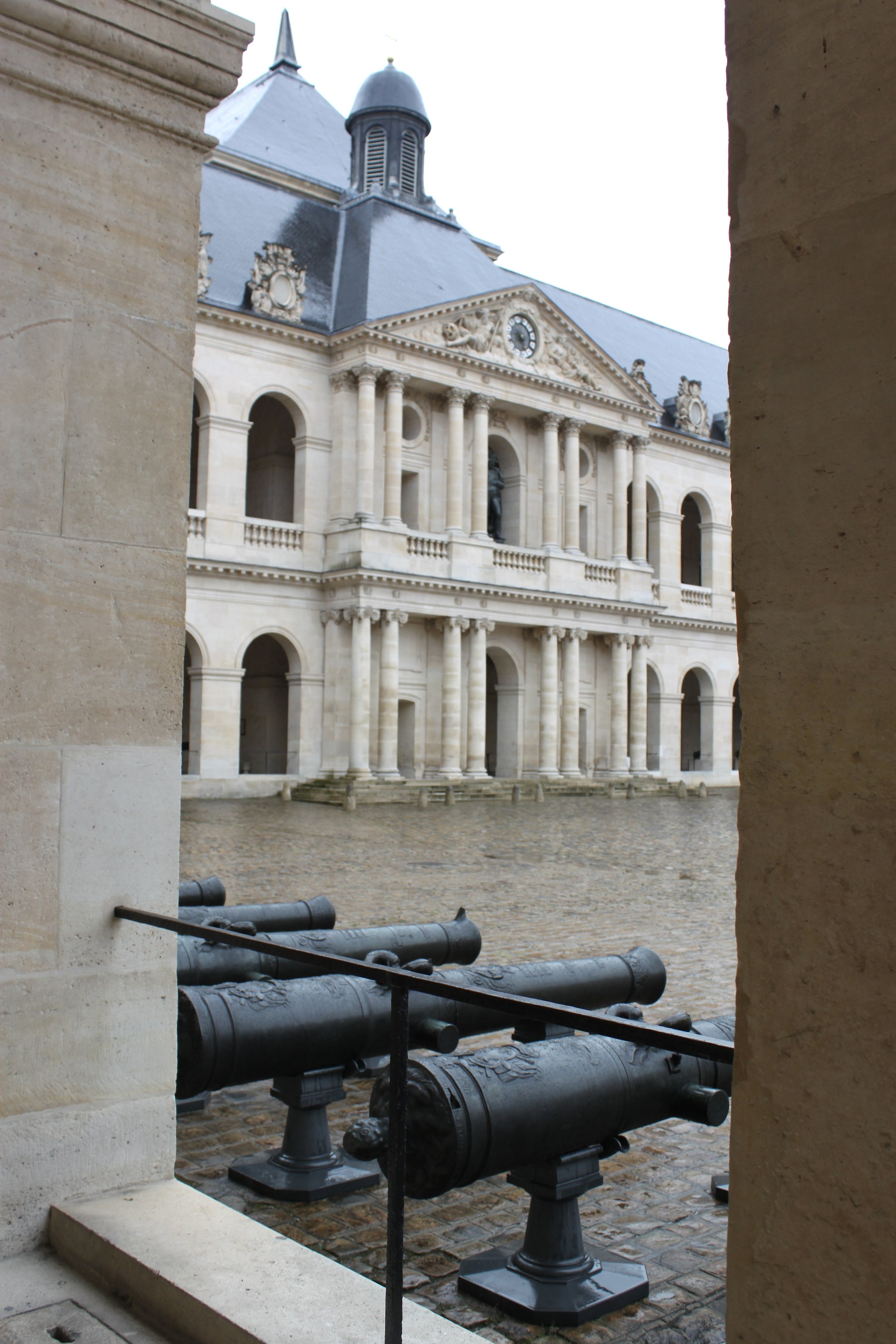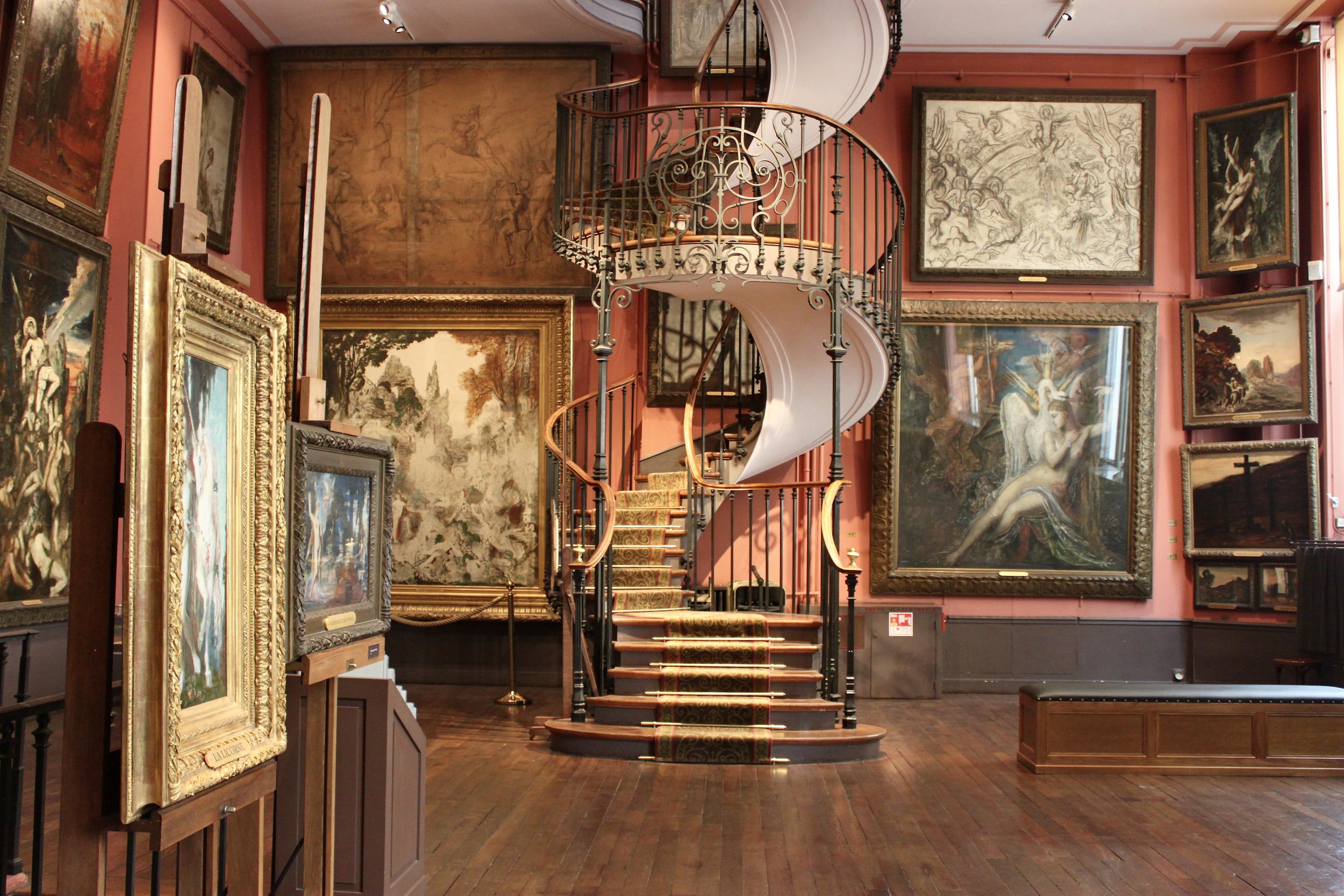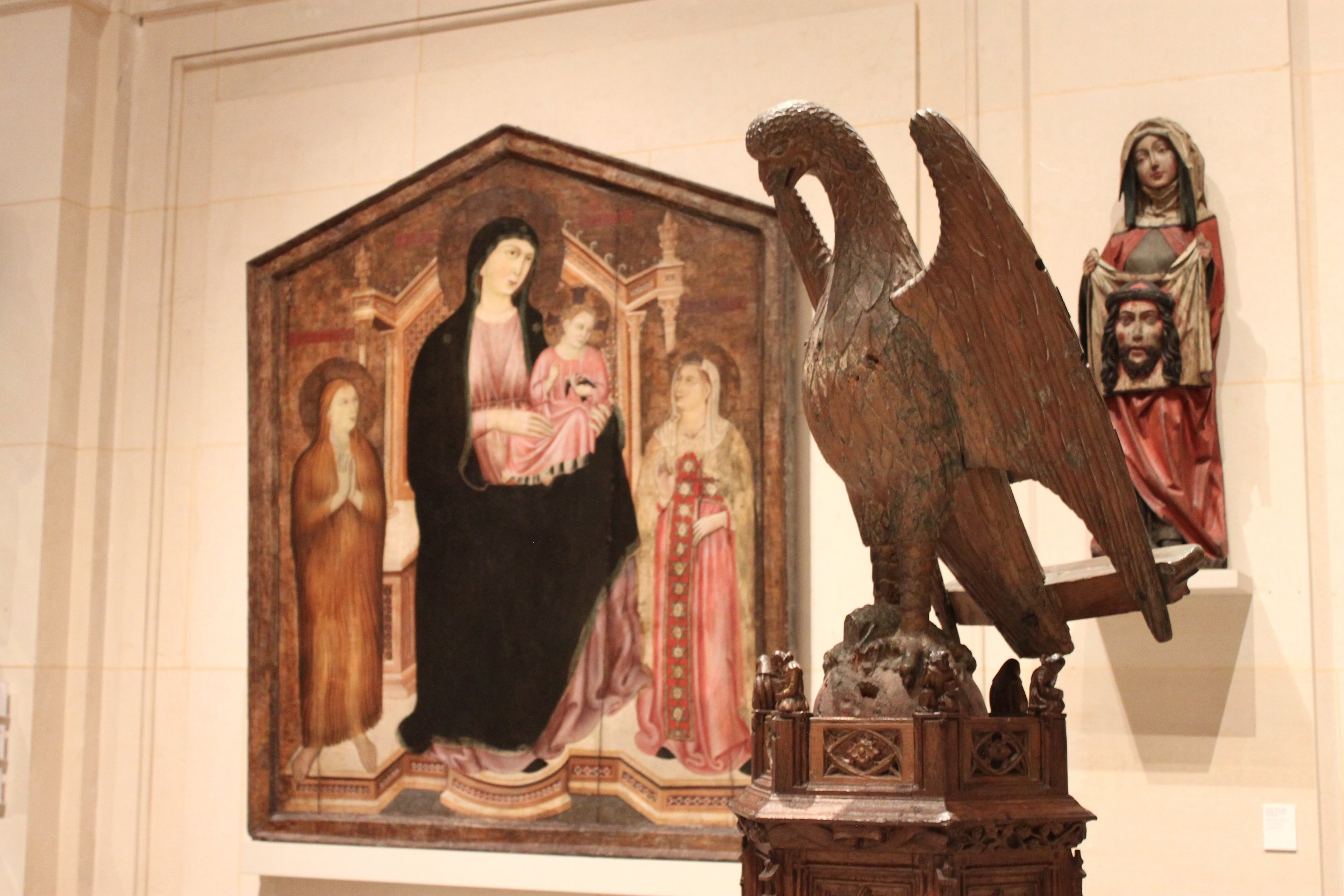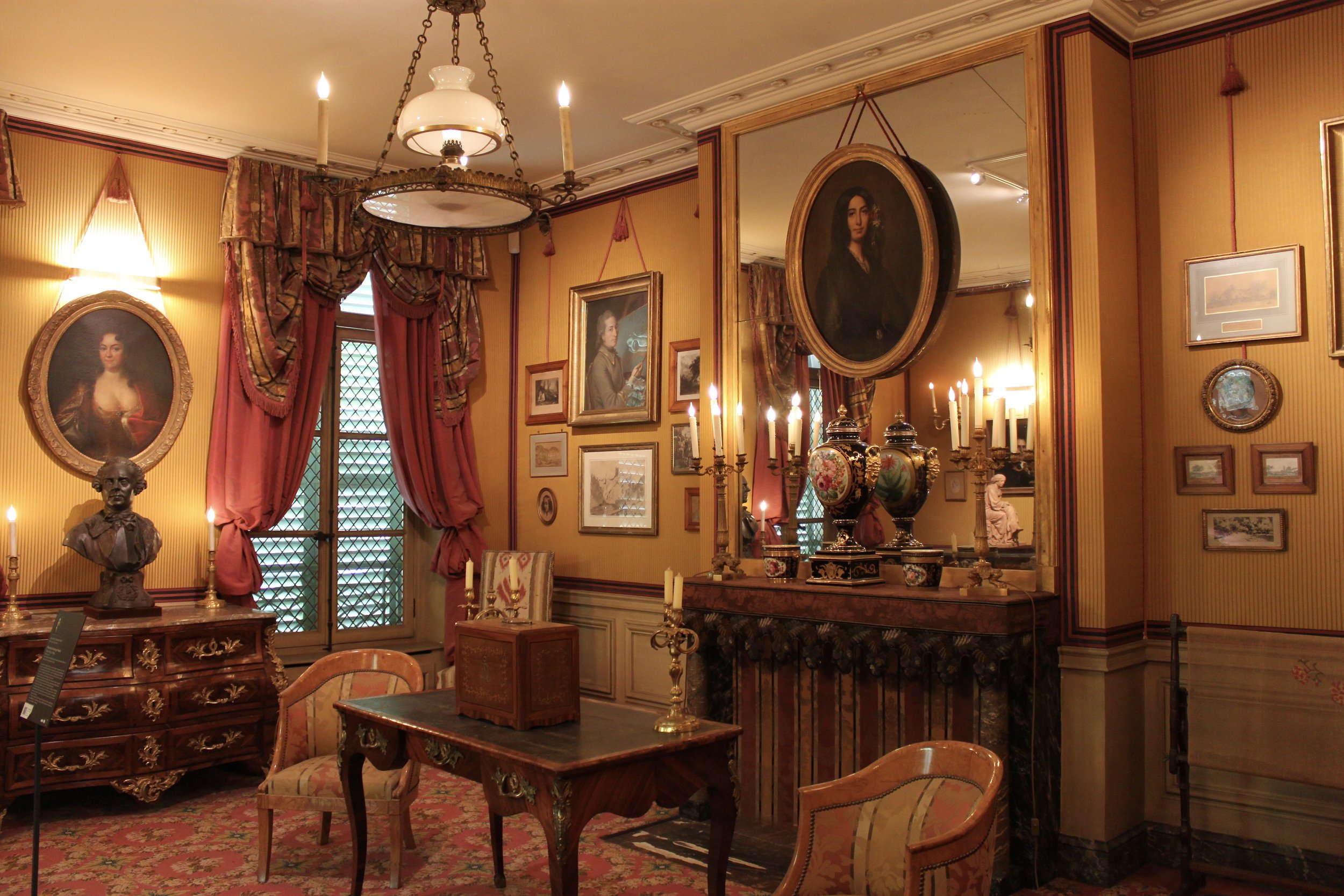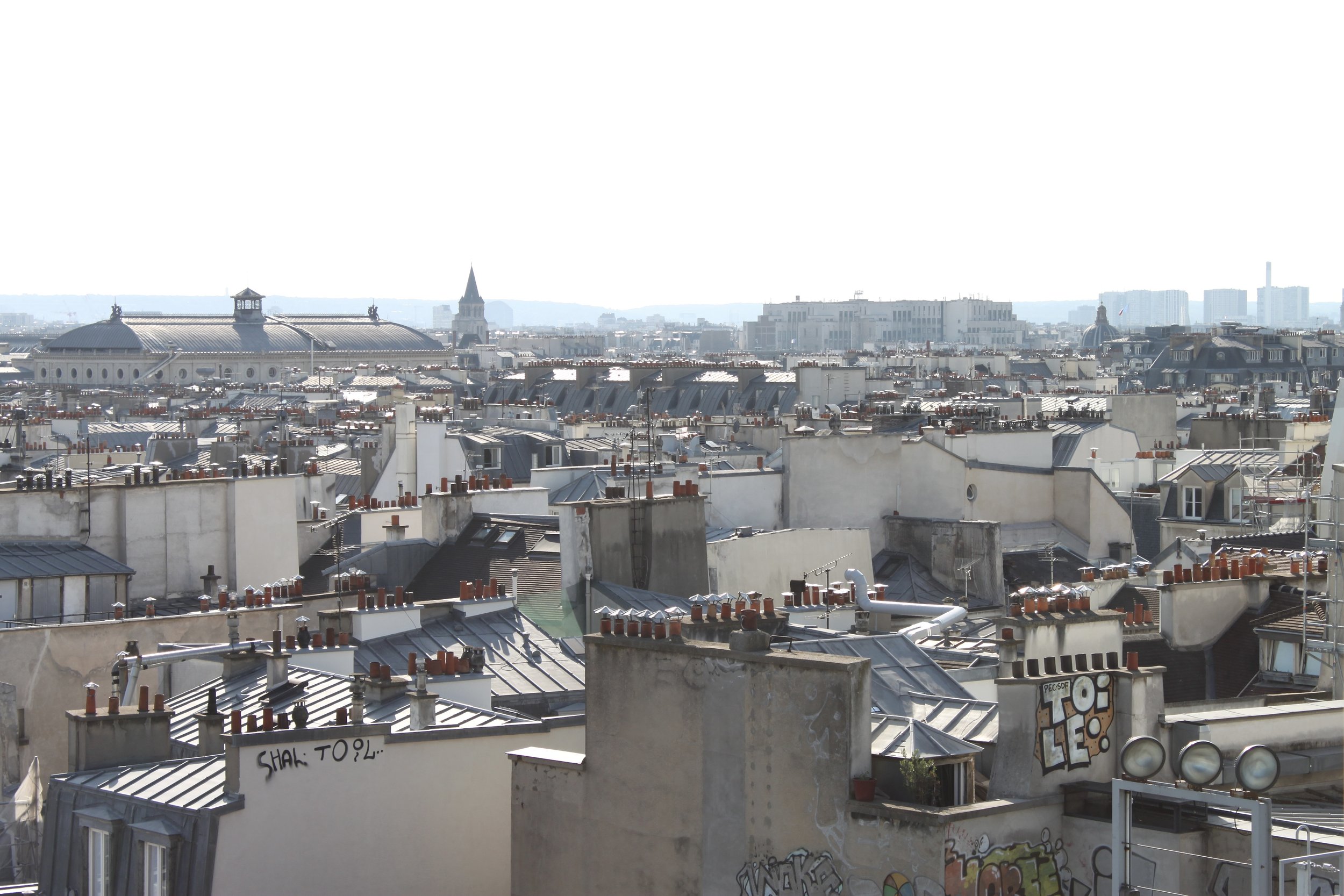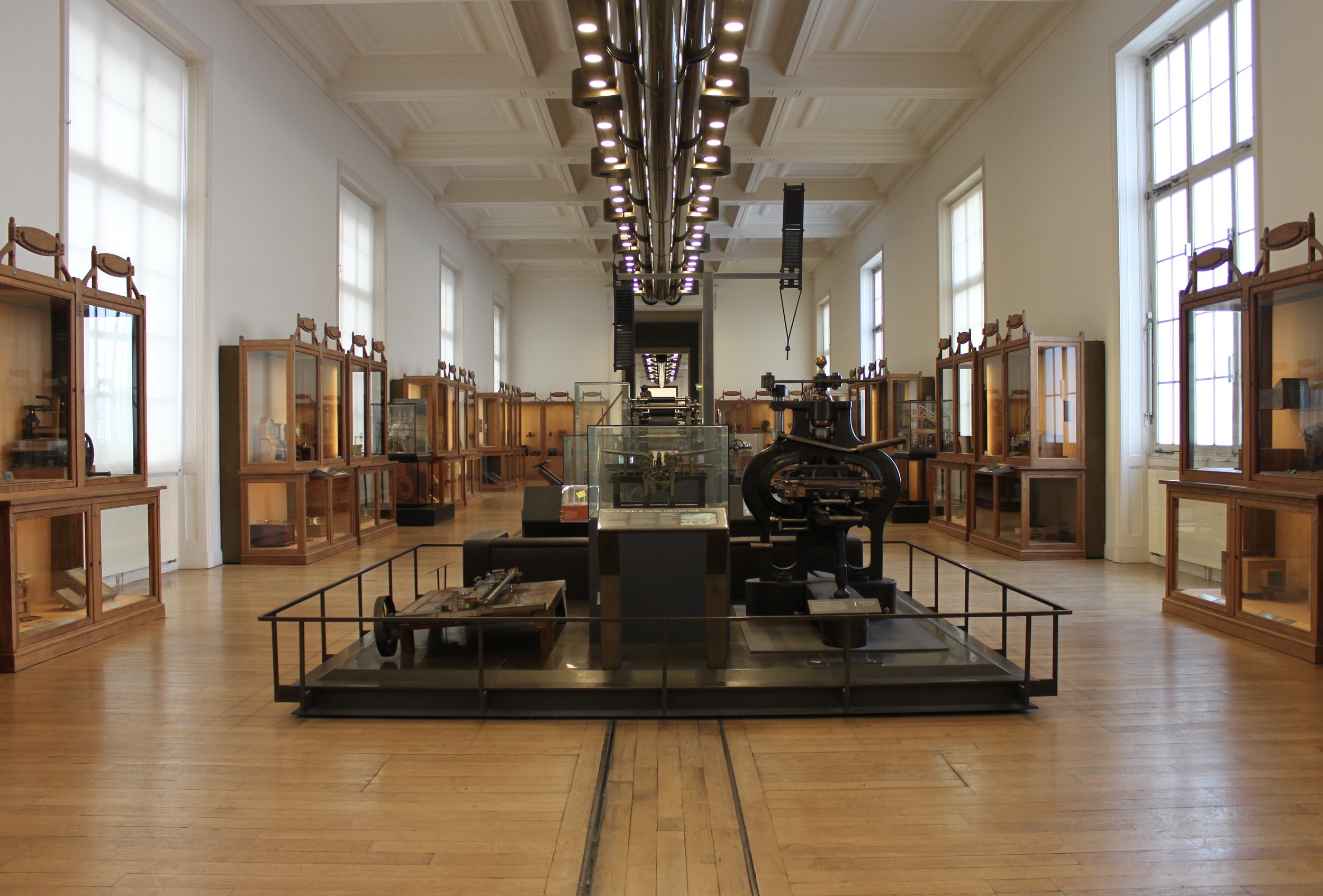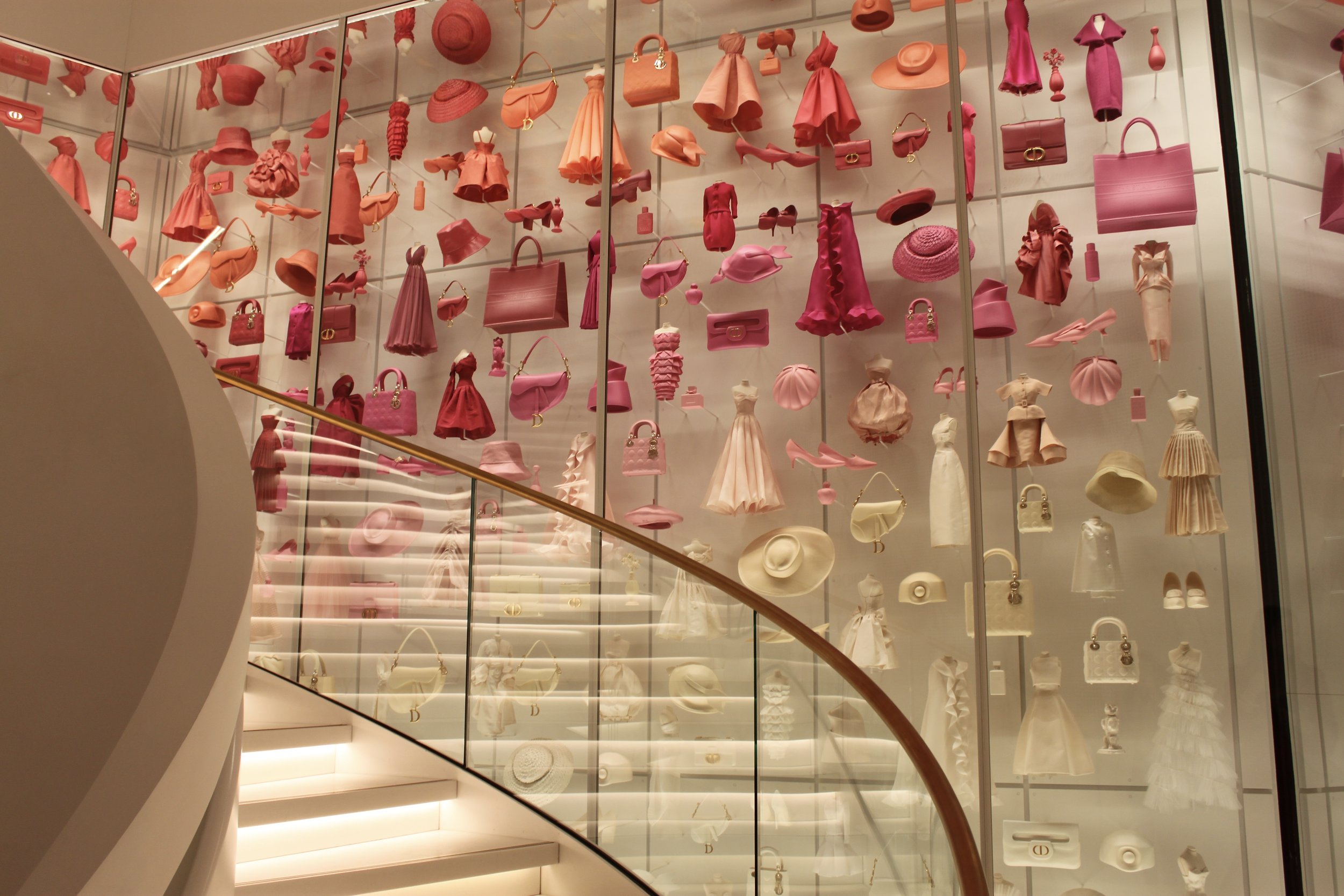MUSEUMS OF PARIS
There is an endless supply of butter, cigarettes, and Haussmannian architecture in Paris. What you will also find is a plethora of museums. Whether you are drawn to sculptures, impressionism, modern art, photography, or design, there is something for you. I have gone through the “trouble” of visiting quite a few museums so that I may share my thoughts on each one.
There are a handful (the Louvre, Musée d’Orsay, Musée Rodin, and Musée de l’Orangerie) that I have previously written about in my Paris Must Sees article and that are also written about down below. These are the most touristy of the bunch and thus, the most congested. If you have never been to Paris and want to visit a museum, I would recommend visiting one or two of the four. However, if you have been to Paris a few times/you have a lot of time to take advantage of more museums/want to move away from the crowds, scroll past the first four museums to find out about more institutions!
Musée du Louvre
Musée du Louvre is a historical landmark that was once a fortress and a royal residence. It is home to around 35,000 artworks and welcomes about 15,000 people a day. Therefore, purchase your tickets in advance! Even then, you will be subjected to a long line where timeslots are strictly enforced. Note that the museum is not open on Tuesdays, and I would avoid the weekend entirely due to the sheer volume of people. For me, I find this museum to be somewhat overhyped and very much overcrowded. However, I understand that if this is your first time in Paris, you would want to visit this famous museum!
inside the Louvre
Musée d’Orsay
A museum that I do not believe is overhyped (but unfortunately is also very crowded) is Musée d’Orsay. I fully admit that I might be a tad biased, as the museum boasts an impressive collection of impressionist art, which is my favorite art movement. There are a lot of great works in this former railway station, so if you would like to make sure you hit the highlights, I recommend signing up for a guided tour of the masterpieces on display. Notable artists include Toulouse-Lautrec, Monet, Manet, Degas, and Cézanne. Lastly, I suggest visiting Musée d’Orsay between Wednesday and Friday, as the museum is closed on Mondays, it is too crowded on the weekends, and there is a surge of people on Tuesdays because the Louvre is closed on that day.
just outside Musée d’Orsay
Musée Rodin
Musée Rodin is not as crazy crowded as the Louvre or Musée d’Orsay. This means if you go during the week when it first opens, there is actually a chance that you can walk around and ponder the art without hordes of people cutting in front of you. Musée Rodin is mainly dedicated to the works of Auguste Rodin, a gifted sculptor who actually donated his collection of sculptures to the French Senate so that the Hotel Biron (his workshop) could be turned into a museum (what we now know as Musée Rodin!) Rodin was so talented that at one point in his career, he was accused of using a life cast of his model, because his carving was simply that good. I am absolutely enthralled by Rodin’s work, and highly recommend this museum for the sculptures, but also for the gorgeous rose garden and the building itself that primarily houses his work.
Musée Rodin
Musée de l’Orangerie
Musée de l’Orangerie is one of my favorite museums because there are a number of impressionists works and like I said, I love this movement! Pissarro, Cézanne, and Renoir adorn these walls, but everyone comes to Musée de l’Orangerie for one thing in particular, and that is for Monet’s Water Lilies. Purchase a ticket for the museum in advance for the earliest timeslot. Then get to the museum 20-30 minutes earlier than when it opens, as a line will begin to form. Head to Monet’s Water Lilies first and save the rest of the museum for afterwards! There are two rooms that house these oil paintings, so be sure to visit both. I found that people were very respectful of the art and allowed fellow tourists to take photos without ruining the shot. However, that might be a different story in the middle of the day, so go early!
in front of one of the Water Lilies pieces
Petit Palais
Calling this museum “petit” is a bit of a misnomer for me, because it feels anything but small! Originally built for the 1900 Exposition Universelle, it is now home to the Museum of Fine Arts for the City of Paris. Because the Petit Palais was designed with four wings, there is an open area in the centre of the building which happens to be the best museum café in all of Paris. As the permanent collections of Petit Palais are free to visit, you don’t even need a ticket to head straight to the courtyard if you just want a moment of peace!
Petit Palais
Musée Histoire de Paris Carnavalet
This museum is dedicated to the history of the city of Paris, and is not nearly as crowded as some of the other museums mentioned on this list. Another great plus is that the permanent collections are free to enjoy (except on Mondays when the museum is closed). The museum opened in 1880 in the Carnavalet mansion and since then, the museum has expanded to include new buildings and the addition of Le Peletier de Saint-Fargeau mansion in 1989. If you love history and want to delve into the backstory of Paris, this niche museum is a lovely way to do so!
Musée Histoire de Paris Carnavalet
Musée de Cluny
Another virtually tourist free experience is that of Musée de Cluny, a museum of medieval art in one of my favorite neighborhoods. It was quite peaceful walking through the museum on a sunny September morning, and as such I do not believe you have to purchase tickets quite so far in advance. I personally love the Middle Ages, and this museum boasts a sizeable collection of art from this time period. This includes a really glorious series of six 15th century tapestries known as La Dame à la licorne, or The Lady and the Unicorn. The tapestries are in a dark room so you can truly focus on the intricate weavings made from wool and silk. As an American, I couldn’t love a tapestry more, and that is because this room is airconditioned to maintain the integrity of the work. You have to love the power of a cool room on a hot day (except on Mondays, when this museum is closed)!
Musée de Cluny
Les Invalides (Musée de l’Armée)
You might have passed the Musée de l’Armée without even realizing it, as the building complex that it is housed in – Hôtel des Invalides – is a noticeable sight in Paris, recognized by its iconic gilded Dome. This compound is home to all things military, including the aforementioned museum, but also the tomb of one of the most famous military commanders in the world – Napoleon Bonaparte. You will get to see arms and armor from the 13th to 17th centuries, revisit great battles from the 17th to 19th centuries, and learn about the two world wars. This is a war museum through and through, so if that is not something that interests you, I would skip this one!
canons at Les Invalides
Musée National Gustave Moreau
Gustave Moreau’s work in the 19th century normally depicted moments from biblical or mythological stories, calling on the otherworldly. He aimed not to invoke thought, but dreams. Even now his legacy lives on, for his will stipulated that his house with all of its contents: paintings, drawings, cartoons, etc. all go to the State. This means that when you enter the museum, tucked away on an unassuming street in the 9th arrondissement, know that you are stepping into the house of Gustave Moreau himself. If you head to the second floor, you will be enamored by the grand staircase and the height of the room, as Moreau requested that this studio space be specifically designed to accommodate the large format of his paintings. I spent an hour sitting on a bench in front of his striking work, and just when I was about to leave, an employee beckoned me over to a stretch of short curtains below the windows of the impressive space. She pulled back the curtains to reveal dozens upon dozens of Moreau’s sketches. With a little smile, she produced a stool for me to sit on, and I spent another hour combing through his sketches, his mind, while a light breeze traveled in through the windows. It was divine!
Musée National Gustave Moreau
Musée des Arts Décoratifs
This is a private, nonprofit museum that is in a wing of the Louvre, with a focus on design. The first museum dates back to 1882, when a group of like-minded individuals in the applied arts formed the initial organization. Their collections are constantly changing and evolving, with a collection called Fashion and Sport on the docket when I visited. Though there was a medieval section which I enjoyed, I personally didn’t love this museum. That is because the majority of exhibitions that I saw were very modern and that is just not my taste, while my friend absolutely adores this institution. Check their website for their most current list of expositions to determine if something piques your interest!
Musée des Arts Décoratifs
Musée de la Vie Romantique
This museum is charming but incredibly small. The size of the museum makes sense, as it was not originally intended as a museum but actually a residence and studio of painter Ary Scheffer. During Scheffer’s (and subsequently his daughter’s) tenure at the house, the home became a literary and cultural salon. Every week the likes of Eugène Delacroix, George Sand, and Charles Dickens congregated for collective creativity and conviviality. I’d say the tradition is being kept alive, as people visit the museum to see works from the Romantic movement of the 19th century and to connect over a cup of tea in the courtyard. The house and garden are tucked away from the crowds and noise of the city, which is really unique and relaxing. Don’t miss my favorite piece: Jean-Jacques Feuchère’s Satan sculpture. For me, it is as though Feuchère carved a bit of humanity into him. See this sculpture and many more pieces from Tuesday through Sunday!
Musée de la Vie Romantique
Musée du Luxembourg
A lot of people know the Jardin du Luxembourg, a gorgeous public park in Paris (and where we got engaged) but did you know that there is a museum in the Palais du Luxembourg? The idea for the museum first came about to prove to other countries that France was able to produce masterpieces itself to strengthen its museums’ collections. Thus in 1818, the first museum dedicated to living artists was approved. (When the creator died, the best work was transferred to the Louvre!) Nowadays, the Musée du Luxembourg presents two exhibitions per year, so check out the website first to see if a temporary collection interests you. I myself viewed a lovely exhibit celebrating the wonderful friendship between Gertrude Stein and Pablo Picasso!
Centre Pompidou
Amongst the Haussmannian architecture emerges a garish building in the 4th arrondissement that houses modern and contemporary works. The two architects of the building, Renzo Piano and Richard Rogers, imagined the complex as a heart, fed by huge arteries in bright colors. Blue represents air conditioning, yellow for electricity, green for water circuits, and red for pedestrian flow. In fact, the huge red escalator, known as the “caterpillar” can be seen from the outside and provides one of the best views of Paris as you travel up. To make the most of the view, take the caterpillar up to the terraces on level 5 and 6. Bean bags and beach chairs await you! Spend as long as you like admiring the view, reading a book, or chatting with a friend, as you can access the caterpillar and the terraces for free without entering the museum portion of the building.
view from Centre Pompidou
Musée des Arts et Métiers
Musée des Arts et Métiers isn’t your typical museum filled with sculptures or oil paintings, but of innovations and discoveries. Founded in 1794 by Henri Grégoire, this museum is dedicated to the preservation of scientific instruments and inventions. More specifically, the museum’s works are split into seven collections: Scientific Instruments, Materials, Energy, Mechanics, Construction, Communication, and Transport. Discover cameras, automobiles, planes, microscopes, and more.
Musée des Arts et Métiers
Palais Galliera
Palais Galliera, formally known as the mouthful Musée de la Mode de la Ville de Paris, is a museum dedicated to fashion and the fashion industry in the 16th arrondissement. In fact, it is estimated that the Palais Galliera currently has almost 200,000 works, including clothing, accessories, photographs, and drawings that tell us the story of fashion from the 18th century to today. I personally think the best part of the museum isn’t the fashion, it is the views from their restaurant Les Petites Mains, which faces the Eiffel Tower. I’d stick with a cup of coffee, as their food isn’t as good as the view!
Palais Galliera
Musée Maillol
Aristide Maillol was a sculpture, a photographer, a painter, and a tapestry designer amongst other things. During his career, he met Dina Vierny, who became his model and collaborator. She bought and lived in an apartment at Rue de Grenelle, and over a period of 30 years, bought the entire building and created this museum to honor him. Besides the rooms that are dedicated to the work of Maillol and the permanent collections, there is space for temporary exhibitions as well, such as the exhibit I saw on Elliot Erwitt! Check the museum’s website to see if the current exhibitions suit you, as they highlight different mediums from the 20th and 21st centuries.
Hôtel de la Marine
The Hôtel de la Marine is a positively gorgeous historic building in a very congested part of town, designed and built between 1757 and 1774 by Ange-Jacques Gabriel. With exquisite rooms and an even more stunning balcony, what stuck out to me the most was the immersive experience visitors have the opportunity to partake in. You are given a headset that uses impressive sound technology to bring to life the rooms and characters that once inhabited the Hôtel de la Marine. As you walk through rooms, the technology automatically picks up on where you are in the building and provides you with the appropriate soundbite. More than once I turned around because it really felt as though someone was talking right behind me!
on the balcony of Hôtel de la Marine
La Galerie Dior
La Galerie Dior was opened in the spring of 2022 to showcase the history of the iconic couture house Dior. The museum takes you from the founding of the company by Christian Dior in 1946 through present day. To start, you will be enthralled when taking in the spiral staircase with a rainbow of Dior creations in 3D-printed miniatures. You can then see images from Christian Dior’s life, passages taken from his book, but most notably, stunning gowns that will make you feel like you have just floated into the most femininely chic Parisian dream. Even if you know nothing about Christian Dior or his fashion, you will be granted access to his office, a peek into the original atelier where the couturiers worked, and suddenly leave an expert. And just when you depart in a haze of elegance and are made to think you need an entire wardrobe of Bar suits, the Dior flagship store is conveniently waiting for you right next door.
part of La Galerie Dior staircase
Musée du Parfum
Musée du Parfum is small but truly delightful. Admission to the museum is free, and you do not need to book anything in advance. Once you visit the museum reception, you will be assigned a guided tour (and if there is no guide available, you will be allowed to walk the museum on your own!) The guided tour ends in the Fragonard store (as the museum is owned by Fragonard, a perfume maker based in Grasse since 1926) where you will be able to smell some of Fragonard’s perfumes and make purchases! I also took an hour and a half perfume making class with Fragonard, which I would highly recommend! Note that the 90m class is in French, though a mini version is offered in English, Spanish, and Chinese.
